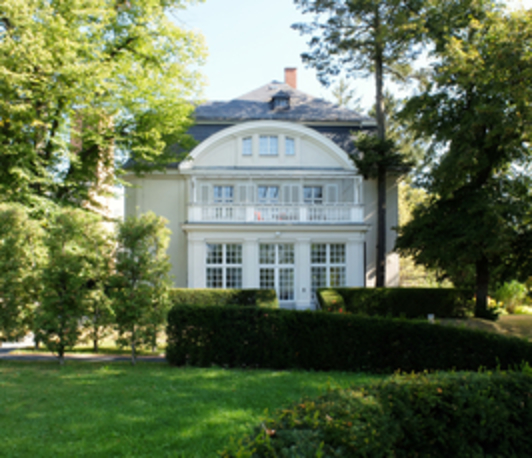Quantum control of ultracold ion-atom collisions
- Seminar of the Molecular Physics Department
- Date: Nov 4, 2022
- Time: 09:30 AM - 11:00 AM (Local Time Germany)
- Speaker: Prof. Michał Tomza
- University of Warsaw, Poland, http://quantmol.uw.edu.pl/people/tomza_cv/
- Location: Haber-Villa
- Room: Seminar Room
- Host: Molecular Physics

Hybrid systems of laser-cooled trapped ions and ultracold atoms combined in a single experimental setup have recently emerged as a new platform for fundamental research in quantum physics and chemistry [1]. Reaching the ultracold s-wave quantum regime has been one of the most critical challenges in this field for a long time. Unfortunately, the lowest attainable temperatures in experiments using the Paul ion trap are limited by the possible rf-field-induced heating related to the micromotion. In my talk, I will present how, in collaboration with experimental groups of Rene Gerristma in Amsterdam and Tobias Schaetz in Freiburg, we have overcome the micromotion limitation, reached the quantum regime, and demonstrated the quantum control of ultracold ion-atom collisions, all for the first time. In Amsterdam, buffer gas cooling of a single 171Yb+ ion in a Paul trap with ultracold 6Li atoms to the quantum regime of ion-atom collisions was realized, and a deviation from classical Langevin theory was observed by studying the energy dependence of the spin-exchange dynamics, being the first observation of shape resonances in ion-atom collisions [2]. In Freiburg, magnetically tunable Feshbach resonances between a single 138Ba+ ion and 6Li atoms were demonstrated by measuring the enhancement of three-body recombination losses and sympathetic cooling rates [3]. The experimental efforts were guided and confirmed by our electronic structure and multichannel quantum scattering calculations, including the first determination of ion-atom scattering lengths. The achieved quantum control of ion-atom collisions opens the way for a plethora of applications in studying the few-body and many-body problems of a single ionic impurity in ultracold atomic or molecular gases.
[1] M. Tomza, K. Jachymski, R. Gerritsma, A. Negretti, T. Calarco, Z. Idziaszek, P. S. Julienne, Rev. Mod. Phys. 91, 035001 (2019)
[2] T. Feldker, H. Fürst, H. Hirzler, N. V. Ewald, M. Mazzanti, D. Wiater, M. Tomza, R. Gerritsma, Nature Phys. 16, 413 (2020)
[3] P. Weckesser, F. Thielemann,
D. Wiater, A. Wojciechowska, L. Karpa, K. Jachymski, M. Tomza, T.
Walker, T. Schaetz, Nature 600, 429 (2021)